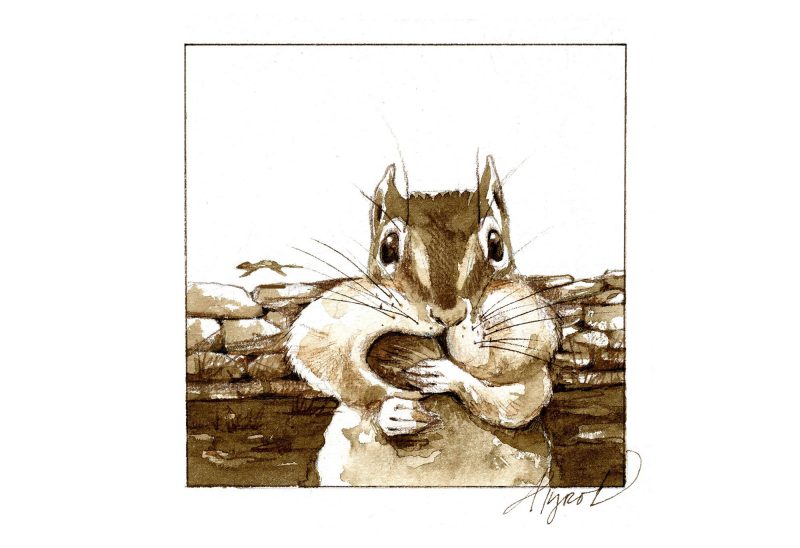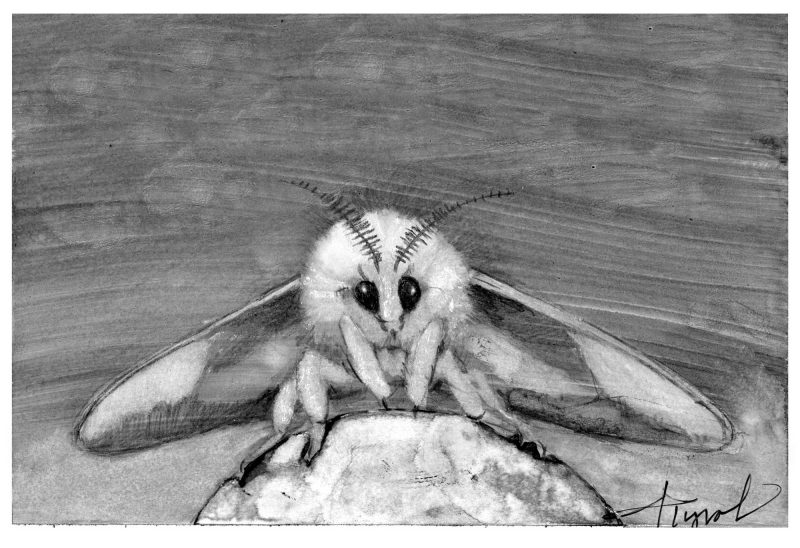During my walks through the woods these days, I am often accompanied by curious children. These children, who are my own, notice many things that I often do not, and they are filled with questions. Who made that track? Why does this grow here? What kind of mushroom is that? With fledgling naturalists – including one who wants to grow up to be a mycologist, an entomologist, or a zoologist, depending on the day – it’s nice to have a few things in the woods I can identify easily at any time of year. Enter Trametes versicolor, the turkey tail fungus.
This common polypore has a name that’s indicative of its appearance. The fruiting body (the part of the fungus that we can see and which contains the reproductive spores) looks much like the tail of a Tom turkey strutting his stuff for prospective hen companions.
Measuring as small as three-quarters of an inch and as wide as four inches, turkey tail is velvety to the touch. It’s usually fan-shaped and banded in an astounding array of colors. Darker bands, generally in a hue of brown, are interspersed by lighter, cream-to-white-colored strips. Orange and blue sometimes weave through the bracket, or a russet or burgundy streak, or a tinge of green.
T. versicolor, whose scientific name translates simply to thin and many-colored, grows throughout the world and is prevalent in our northern forests, found commonly on the stumps and dead trunks of deciduous trees like oak, beech, maple, and birch. It grows in rows along fallen trees, or circling dead stumps, or in colorful clusters of rosettes whose wavering edges and vibrant hues seem to ripple and swirl like a flamenco dancer’s skirts.
Like other members of the polypore family, T. versicolor plays an important part in decomposing wood. Its mycelium – the extensive network of spider-web-like fibers that absorb nutrients for the fungus – breaks down the lignin portion of deadwood, leaving behind cellulose that is white and stringy in appearance. Thus, turkey tail is considered a “white rot” fungus. In terms of forest ecology, it helps to return nutrients to the soil, where they may be accessed by plants.

Illustration by Adelaide Tyrol.
Turkey tail also acts as fodder for small animals like squirrels, turtles, slugs, and beetles, and as shelter for fungus gnats and the horned fungus beetle. While T. versicolor is technically also edible for humans, it’s a bit tough, although it can be steeped to make a tea, which has been touted for its immune-boosting properties in some cultures.
While T. versicolor’s appearance makes it generally easy to identify, there are several other fungi with similarly shaped fruiting bodies that also feature bands of color. One of the easiest ways to confirm that you’re looking at a true turkey tail is to look beyond the pretty surface to the underside of the fruiting body. A turkey tail’s bottom, the side that faces toward the ground, is white to yellow in color and densely covered in round, spore-bearing pores.
False turkey tail, Stereum ostrea, has similar coloration, but it’s pore-less. Other almost look-alikes are paler in hue. One of these, Trametes hirsute is more hairy looking, as its name implies.
New turkey tails generally appear in late summer through fall, but older specimens are easy to find year-round. While other fungi, so abundant in the autumn woods, fade away by winter, turkey tails endure, and bridge the color gap to spring.
This week’s Outside Story feature was written by Meghan McCarthy McPhaul who lives in Franconia, New Hampshire. The illustration for this column was drawn by Adelaide Tyrol. The Outside Story is assigned and edited by Northern Woodlands magazine and sponsored by the Wellborn Ecology Fund of the New Hampshire Charitable Foundation.



















